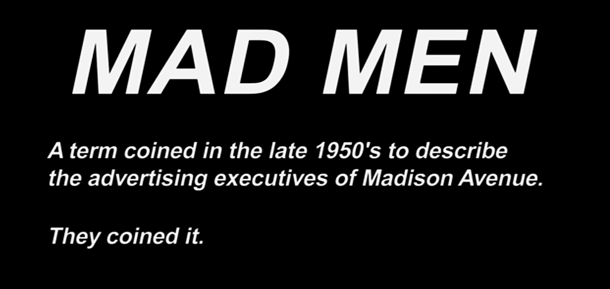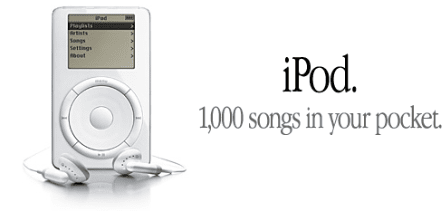Mad Men is a show I wished I'd watched years ago.
It's incredibly entertaining and it's also apparent the show's writers understood a thing or two about marketing.
The '50s had some of the most original and iconic advertising campaigns to date, and although the show is fictional, you can't help but want to experience the same process. There's something about coming up with a campaign that captivates and impresses your audience so well it's recognized by your peers.
And while modern agencies may not be as booze and cigarette-laden as Sterling & Cooper in the show, there are a lot of baseline practices that have dramatically changed over the years. But there are also a few that haven't.
Marketing Tactics from Mad Men and How You Can Use Them Today
The show is based on the book Confessions of an Advertising Man by David Ogilvy, the Father of Advertising.
While the show is packed with quotes and useful tidbits, let's look at the very first episode. In it, Draper and his team are trying to plan a campaign to market cigarettes now that recent studies claim they cause cancer.
VIDEO TRAINING
Get The Growth Marketing Playbook.
Learn to plan, budget, and accelerate growth with our exclusive video series. You’ll discover:
- The 5 phases of profitable growth
- 12 core assets all high-growth companies have
- Difference between mediocre marketing and meteoric campaigns
Thanks for submitting the form!
1. Consumer Research
The show opens with Don Draper sitting in a bar, napkins covered with scribblings spread across the table before him. He looks around the room, seeing people talk and smoke. He takes a puff of his cigarette, then, he asks the waiter some questions about why he smokes the brand he does.
He's conducting consumer research. Draper takes to the front lines to figure it out, and it's something we still do today. Our consumer research, however, is usually done through:
Surveys
Surveys can be an excellent way to collect information. However, sometimes, the feedback isn't honest. People generally don't want to spend their time on a survey unless they're extremely committed to the brand, or if there's something in it for them. Surveys are often too inconvenient to be useful.
To mitigate this risk, present only the questions you need answers to. Anything that won't get you closer to the results you're trying to reach must be removed if you want to increase your chances of a customer filling it out.
Testing
There are tons of ways we can test pages and offers to see what consumers prefer. Take CTAs, for example. By testing different variation, you can find the one that best speaks to your audience when presented on specific pages. This is a form of consumer research, and although it doesn't provide as much direct information as a survey, it's one we do nearly every day.
Social Media
If you can get out and meet your audience where they congregate, even if that's on social media, you'll have a better chance of understanding what they actually like and want. Platforms such as Facebook can give you a lot of insights into buyer personas by showing what products and brands they engage with. You can then use that information to tailor your marketing strategy to the demographic that would benefit most from your product.
2. Understand The Features
In this episode, the major hurdle is that advertisers can't make health claims in regards to cigarettes. The only feature left for Draper's team to use is the crush-proof box, something that's becoming more common among the competition.
Modern day marketing hasn't changed when it comes to positioning features in a way that highlights the benefits consumers care about.
Take Apple's iPod advertisement. They could have discussed how much space was on the device, but instead, they chose the phrase, "1,000 songs in your pocket." This is the benefit people were after. Not having to carry a portfolio of discs with you everywhere you go, meant you could have your music anywhere. It also improved the owner's status in their social circle. Apple took a feature and amplified the benefit.
The same happens with all our products and services. We take what we offer, write down all the features, and like connecting lines, we match the benefit our audience desires most.
3. Overcome Objections
In this episode, the challenge isn't getting people to smoke. People are already addicted to the product. The problem is getting people to smoke Lucky Strikes instead of their preferred brand. They need to change the customer's loyalty.
The way we manage this at Lean Labs is through an analysis of the competitive landscape. We study the competition to see why people use their product or service, and more importantly, why people would stop.
After identifying what a customer hopes to gain and what type of person the product is a best fit for, we move to the struggling moment. This is where we search for the hole in the competitor's product. Why would someone not want to continue with a product? It's normally based on what they're trying to accomplish in the Jobs to be Done section.
With this, we can then analyze what's at stake for the user and can develop marketing assets that speak to their needs. The holes we find open doors to the emotional triggers that set our target customers off. They allow us to position our client's products in a way that highlights where it stands above the competition.
4. Finding the Blue Ocean
The Blue Ocean is the market that no one has gone to yet. The waters are clean and ready for fishing. In a Red Ocean, the waters are over-fished. The market is over-saturated, and there's nothing left to gain for those that stay behind. If you can find a way to recreate your market, you can stay relevant and ahead of the competition.
A great example is Netflix. They saw a market in online video rentals. They ran with that until other companies started following suit, and then they saw another Blue Ocean. Netflix added online streaming as an option and, again, dominated the market because everyone else was stuck in a Red Ocean.
It's not easy to find your brand's Blue Ocean, but once you do, you can quickly gain momentum to remain the dominant player in your industry.
In Mad Men, Draper discusses Lucky Strike's manufacturing process. The CEO claims their product is better because it's toasted. And right there, Draper acknowledges that the process of how they bring tobacco to the consumer hasn't been discussed. He's creating a market for people who care about how their product is created. It's a different approach that leads to a Blue Ocean and ultimately success.
Improving Your Marketing Tactics
Not all marketing study has to be accomplished in a book or class. Sometimes the lessons are right in front of us, be it a television show or people watching at a nearby show. If you can stay focused on understanding why and how people buy, you'll improve your marketing tactics with little effort.
Chris a digital marketer at Lean Labs. He enjoys strategizing and creating content that drives results. When not typing away, Chris is exploring nature with his two daughters, wife, and dogs.





.png?width=610&name=Competitive%20Landscape%20(1).png)





